Nurses play a crucial role in suicide prevention and caring for at-risk patients. They contribute to system-level interventions by ensuring environmental safety, improving protocols and policies, and participating in staff training. At the patient level, nurses assess outcomes, evaluate suicide risk, monitor and manage at-risk patients, and provide suicide-specific psychotherapeutic interventions. Building a therapeutic relationship and taking all suicide threats or attempts seriously are essential aspects of nurses’ hands-on care. Learn about the care for patients with suicidal ideations in this care plan guide.
What is suicide?
Suicide is the intentional act of killing oneself. The act constitutes a person willingly, perhaps ambivalently, taking their own life. Death by suicide means the person has died. It is important not to use the term successful suicide because the goal is to prevent suicide and provide treatment (Soreff & Xiong, 2022). Suicidal thoughts are common in people with depression, schizophrenia, alcohol/substance abuse, and personality disorders (antisocial, borderline, and paranoid). Physical illness (chronic illness such as HIV, AIDS, recent surgery, pain) and environmental factors (unemployment, family history of depression, isolation, recent loss) can play a role in suicide behavior.
Suicidal ideation, often called suicidal thoughts or ideas, is a broad term used to describe a range of contemplations, wishes, and preoccupations with death and suicide. Active suicidal ideation denotes experiencing current, specific, suicidal thoughts. It is present when there is a conscious desire to inflict self-harming behaviors, and the client has any level of desire, above zero, for death to occur as a consequence. Passive suicidal ideation refers to a general wish to die but there is no plan of inflicting lethal self-harm to kill oneself. This includes indifference to an accidental demise which would occur if steps are not taken to maintain one’s own life (Harmer et al., 2023).
Suicide rates increased 30% between 2000 and 2018, and declined in 2019 and 2020. Suicide is the leading cause of death in the United States, with 45,979 deaths in 2020. Globally, an estimated 700,000 people take their own lives annually. Of these global suicides, 77% occur in low- and middle-income countries (Soreff & Xiong, 2022).
Patients who engage in suicidal attempts often have underlying psychiatric disorders, with mood disorders like depression and bipolar disorder being the most common. Schizophrenia and organic brain disorders are also linked to a higher risk of suicide, particularly when accompanied by auditory hallucinations urging self-harm. Other factors contributing to suicide risk include substance misuse, mental disorders, psychological states, cultural and social situations, and genetics.
Different suicide methods are more prevalent in men and women. Men commonly use methods like asphyxiation, hanging, firearms, jumping, and sharp objects, while women tend to employ a wider range of methods, including self-poisoning, exsanguination, drowning, hanging, and firearms.
Nursing Care Plans & Management
Nursing care management for at-risk patients include establishing a therapeutic relationship, conducting a comprehensive assessment, implementing safety measures, providing education and support, facilitating collaborative care, and promoting self-esteem and resilience. These interventions aim to create a safe environment, address immediate needs, and promote mental well-being.
Nursing Problem Priorities
The following are the nursing priorities for patients with suicidal ideation:
- Establish a Therapeutic Relationship. Building a trusting and supportive relationship with the patient is essential. The nurse should demonstrate empathy, active listening, and non-judgmental attitude to create a safe environment for the patient to express their feelings and concerns.
- Conduct a Comprehensive Assessment. Perform a thorough assessment of the patient’s mental health status, including suicidal ideation, intent, and plan. Assess for any underlying psychiatric disorders, substance abuse, or psychosocial stressors that may contribute to the risk of suicide.
- Implement Safety Measures. Take immediate steps to ensure the patient’s safety. This may involve removing any potentially harmful objects or substances from the patient’s environment, implementing close observation, or utilizing suicide precautions as per the healthcare facility’s policies.
- Collaborate on a Safety Plan. Work collaboratively with the patient to develop a personalized safety plan that includes strategies to manage suicidal thoughts or urges. This plan may involve identifying support systems, establishing coping mechanisms, and creating a crisis response plan with emergency contact information.
- Provide Education and Support. Educate the patient and their family about suicide risk factors, warning signs, and available resources. Offer psychoeducation on coping skills, stress management techniques, and the importance of medication adherence if applicable. Provide emotional support and encourage the involvement of supportive individuals or community resources.
Nursing Assessment
Assess for the following subjective and objective data:
- Decreased affect
- Decreased judgment
- Decreased problem solving
- Impaired decision making
- Lack of initiative
- Lack of involvement in care
- Lack of motivation
- Loss of interest in life
- Passivity, decreased verbalization
- Turning away from the speaker
Assess for factors related to the cause of suicidal ideation:
- Alcohol and substance abuse/use
- Childhood abuse
- Family history of suicide
- Fits demographic (children, adolescents, young adult males, elderly males, Native American, Caucasian)
- Grief, bereavement/loss of an important relationship
- History of prior suicide attempt
- Hopelessness/helplessness
- Legal or disciplinary problems
- Physical illness, chronic pain, terminal illness
- Psychiatric illness (e.g., bipolar disorder, depression, schizophrenia)
- Poor support system, loneliness
- Disturbance in the pattern of tension release
- Impulsive use of extreme solutions
- Inadequate coping skills and social support
- Inadequate resources and opportunity to prepare for a stressor
- Personal loss or threat of rejection
- Poorly developed social skills
- Situational or maturational crises
- Severe depression, delusions, or hallucinations
- Substance abuse or withdrawal
- Hopelessness, despair, increased anxiety
- Conflictual interpersonal relationships
- Employment problems
- Self-destructive behavior
- Suicidal ideation or behavior
- Anger, hostility
Nursing Diagnosis
Here are some common nursing diagnosis for suicidal ideations:
- Risk for suicide
- Risk for self-harm
- Hopelessness
Nursing Goals
Goals and expected outcomes may include:
- The client will establish a safety plan with the nurse, including the identification of triggers, coping strategies, and emergency contacts.
- The client will actively engage in individual or group therapy sessions to develop new coping skills and strategies.
- The client will maintain regular appointments with a crisis counselor or mental health professional for ongoing support.
- The client will identify at least one meaningful goal for the future, fostering a sense of purpose and hope.
- The client will adhere to a no-suicide contract and verbalize a desire to live.
- The client will engage in crisis family counseling to address underlying family dynamics and promote a supportive environment.
- The client will connect with self-help groups in the community to foster a sense of belonging and receive additional support.
- The client will refrain from using substances or engaging in substance abuse as a means of coping.
- The client will demonstrate improved emotional regulation and employ at least two healthy strategies for managing emotional pain.
- The client will recognize their self-worth and identify personal roles and responsibilities in life.
- The client will exhibit a reduction in self-destructive behaviors through the implementation of healthier coping mechanisms.
Nursing Interventions and Actions
Therapeutic interventions and nursing actions for patients with suicidal ideation may include:
1. Risk assessment and establishing therapeutic relationship
Clients with a history of alcohol and substance abuse, as well as those who have experienced abuse, are at increased risk for suicide due to the negative impact of these factors on their mental well-being. Additionally, individuals with a family history of suicide, a history of psychiatric illness, or a prior suicide attempt are also at higher risk due to genetic and environmental influences, as well as ongoing mental health challenges.
1. Perform screening for suicidal ideations.
A variety of suicidal ideation screening and suicide risk assessment scales have been validated and meet the Joint Commission’s requirement for primary care, emergency department, and behavioral health professionals to assess individuals with behavioral health issues. Tools should be consistent with the client’s age, the setting, and organizational policies. Examples of screening tools in the emergency department include the Ask Suicide-Screening Questions (ASQ), Manchester Self-Harm Rule, and Risk of Suicide Questionnaire (Harmer et al., 2023).
2. Identify characteristics or behaviors pertaining to suicidal ideations.
Ask the client questions to elicit thoughts on living and dying. Distinguishing between passive and active suicidal ideation is typically done to identify if there is an imminent short-term risk. The nature of suicidal ideations can fluctuate rapidly, so assessing worst-ever and more recent fluctuations is advised. Ambivalent thoughts between continuing to live vs. wanting to die are common (Harmer et al., 2023).
3. Assess for early signs of distress or anxiety and investigate possible causes.
Anxiety in all its forms leads to a risk of suicide; the constant sense of dread and tension proves unbearable for some. In addition to suicide inquiry, the potential for homicide inquiry must be assessed. Aggression turned inward is suicide; aggression turned outward is homicide. There is a linkage between homicide and suicide in adolescents, wherein two of the leading causes of violent death are suicide and homicide (Soreff & Xiong, 2022).
4. Monitor for suicidal or homicidal ideation.
These are indicators of the need for further assessment and intervention or psychiatric care. Determine whether the client has any thoughts of hurting themself. Suicidal ideation is highly linked to completed suicide. Because suicide constitutes an aggressive act, the question regarding homicidal tendencies must be asked (Soreff & Xiong, 2022).
5. Assess suicidal intent on a scale of 0 to 10 or by asking directly if the client is thinking of killing themself, or has plans, means, and so on.
This provides guidelines for the necessity and urgency of interventions. Direct questioning is most helpful when done in a caring and concerned manner. Of the 9.4 million clients with serious thoughts of suicide, 2.7 million reported they had made suicide plans, and 1.1 million made a nonfatal suicide attempt (Soreff & Xiong, 2022).
6. Maintain straightforward communication and assist the client to learn assertive rather than manipulative or aggressive behavior.
This avoids reinforcing manipulative behavior and enhances positive interactions with others, accomplishing the goal of getting needs met in acceptable ways. The nurse must be clear and consistent with boundaries, expectations, and limitations. The client must understand that the staff is there to support them but that they will not tolerate manipulation, threats, or abusive behavior.
7. Help the client choose activities to redirect their emotions.
This promotes the release of energies in acceptable ways. Redirecting a confused client can minimize the escalation of agitation. Using an effective coping strategy such as a task-focused coping style helps the client to think less about suicide. This coping style helps the client by managing their emotions and engendering a commitment to useful social activities (Addollahi & Carlbring, 2017).
8. Acknowledge the reality of suicide or homicide as an option. Discuss the consequences of actions if the client were to follow through on their intent.
The client may focus on suicide, or possibly homicide, as the “only” option, and this response provides an opening to look at and discuss other options. For any decision, most people naturally weigh the costs and benefits of the potential action. The nurse’s task is to help the client recognize and weigh the negative aspects to tip the scale in favor of change (Substance Abuse and Mental Health Services Administration, 2019).
9. Remain calm and state limits on behavior in a firm manner.
Understanding that helplessness and fear underlie this behavior aids in choosing the appropriate response. Avoid giving in to the client’s demands, threats, or manipulation. Help the client recognize the consequences of their actions and choices, and hold them accountable for their behavior.
9. Provide protection within the environment.
The client may need more structure to maintain control until their own internal locus of control is regained. A study of the association between the provision of mental health services and suicide rates found that removing ligature points (places where things like ropes could be attached) was associated with significant reductions in the overall psychiatric inpatient suicide rate and in the rate of inpatient suicide by hanging. Similarly, assessing other available sources of self-destructive implements such as pills and guns is critical (Soreff & Xiong, 2022).
10. Tell the client to stop.
This may be sufficient to help the client control their own actions if exhibiting hostile actions. The client may be often afraid of their own actions and wants staff to set limits. Calmly and assertively telling the client to stop can communicate that their behavior is not acceptable. Additionally, verbal interventions can be effective when used in conjunction with other techniques, such as de-escalation strategies, active listening, and empathetic communication.
11. Administer medications as indicated.
Each mental disorder requires specific medications and adequate treatment of the underlying psychiatric illness consistently appears to be the most effective use of medication in suicidal clients. A client with schizophrenia experiences self-destructive command hallucinations telling the client to commit suicide. Once the client’s safety has been established, an antipsychotic medication is indicated (Soreff & Xiong, 2022).
12. Prepare the client for transcranial magnetic stimulation (TMS).
In a randomized study of 41 adult clients in suicidal crisis, high-dose TMS to the left prefrontal cortex, applied three times daily for three consecutive days, yielded a significantly larger and more rapid reduction in scores on the Beck Scale for Suicide Ideation (SSI). all subjects had comorbid posttraumatic stress disorder, mild traumatic brain injury, or both (Soreff & Xiong, 2022).
13. Talk to the patient to evaluate the potential for self-injury.
Patients considering suicide may display verbal and behavioral cues about their intent to end their life.
14. Ask the following questions:
- “Have you ever considered harming yourself?”
Suicide ideation is the manner of thinking about killing oneself. The patient’s risk for suicide progresses as these thoughts become more frequent. - “Have you ever attempted suicide?”
The patient’s status of suicide risk is distinguished if there is a history of earlier suicide attempts. - “Do you currently consider like killing yourself?”
This allows the person to discuss feelings and issues openly. - “What are your plans with regard to killing yourself?”
Citing a plan and the ability to carry it out greatly increases the risk for suicide. The more harmful the plan, the more serious the risk for suicide. - “Do you trust yourself to maintain control over your insights, emotions, and motives?” Patients with suicidal thoughts may sense their authority of suicidal thoughts slipping away, or they may feel themselves surrendering to a desire to end their life.
15. Observe for risk factors that may increase the chance of a suicide attempt.
It is a myth that suicide occurs without forewarning. It is also a myth that there is a typical type of suicidal person. Anyone can be a victim of suicide. Assess for the following risks:
- History of suicide attempts by oneself or within the family. This increases the risk for suicide.
- Suicidal thoughts or statements. Most of the patients with suicide attempts give verbal cues of their plans to do so. The person may talk idealistically about release from his or her life and the resolution of problems.
- Substance use. Alcohol and drug abuse increases the risk of suicide. The highest risk is among patients who have substance abuse problems.
- Sleep habits. A history of severe insomnia is one factor associated with suicide risk.
- History of mood disorders. Mood disorders such as depression and bipolar manic-depression are by far the most prevalent psychiatric conditions linked to suicide.
- Unexplained happiness or drive. This sudden behavioral modification may represent the person’s decision to carry out a suicide plan.
- Male gender. Men die by suicide around four times more frequently than women, whereas women attempt suicide two to three times more frequently than men.
- Giving away personal possessions. This action signifies the person’s detachment and withdrawal from life.
16. Determine particular stressors.
Determining causative factors aids in developing appropriate coping strategies. Suicide seemed to be an acceptable solution when a person can not find any more solution to his or her problem.
17. Appraise all possible and beneficial coping methods.
Patients with a history of ineffective coping may need new resources.
18. Assess the need for hospitalization and safety precautions.
Patient safety is always a priority. Patients with suicidal attempts should be in a setting with direct supervision.
19. Assess all support resources available to the patient.
Depression leads to a sense of hopelessness and the person involved may isolate himself or herself and may be unable to consider available supports.
20. Assess decision-making and problem-solving energy.
Impulsivity may be an element of mood and bipolar disorder. Patients may need supervision in decision-making until the mood has been stabilized.
21. Render close patient supervision by sustaining observation or awareness of the patient at all times.
Suicide may be an impulsive act with little or no warning. Close supervision is a must.
22. Provide a safe environment. Weapons and pills should be removed by friends, relatives, or the nurse.
Removing potentially harmful objects prevents the patient from acting or having sudden self-destructive impulses.
23. Present opportunities for the patient to express thoughts, and feelings in a nonjudgmental environment.
It is helpful for the patient to talk about suicidal thoughts and intentions to harm themselves. Expressing their thoughts and feelings may lessen their intensity. Also, they need to see that staff are open to discussion.
24. Create a verbal or written contract stating that the patient will not act on impulse to do self-harm.
This method establishes permission to talk about the subject.
25. Stay with the patient more often.
This approach provides the patient with a sense of security and strengthens self-worth.
26. Help the patient with problem-solving in a constructive manner.
Patients can get to identify situational, interpersonal, or emotional triggers and learn to assess a problem and implement problem-solving measures before reacting.
27. Arrange for the client to stay with family or friends. A hospitalization is considered if there is no one available especially if the person is highly suicidal.
Relieve isolation and provide safety and comfort.
28. Educate the patient on the appropriate use of medications to facilitate his or her ability to cope.
Drug therapy may benefit the patient to endure underlying health problems such as depression.
29. Contact family members and arrange for individual and/ or family crisis counseling. Activate links to self-help groups.
Reestablishes social ties. Diminishes the sense of isolation, and provides contact from individuals who care about the suicidal person.
30. Educate the patient on cognitive-behavioral self-management responses to suicidal thoughts.
Patient learns to identify negative thoughts and develops positive approaches and positive thinking.
31. Introduce the use of self-expression methods to manage suicidal feelings.
Patients are better to acknowledge and safely handle suicidal feelings through programs such as keeping journals and calling hotlines.
2. Establishing safety measures
Clients treated for deliberate self-harm frequently repeat self-harm in the following year. Clients who use a violent method for their initial self-harm, especially firearms, have an exceptionally high risk of suicide, particularly right after the initial event. This highlights the importance of careful assessment and close follow-up of these clients. Because one in seven clients who completed suicide has been treated for self-harm in the preceding year, suicide prevention commonly focuses on clinical management following self-harm events (Olfson et al., 2017).
1. Arrange for the client to stay with family or friends. A hospitalization is considered if there is no one available especially if the person is highly suicidal.
This relieves isolation and provides safety and comfort. Involve family and friends; they can remain with the client while treatment arrangements are made. Inpatient care at a hospital offers one of the best settings. Most managed care companies recognize the medical necessity of hospitalization in situations in which the suicide danger is acute (Soreff & Xiong, 2022).
2. Encourage the client to avoid decisions during the time of crisis until alternatives can be considered.
During crisis situations, people are unable to think clearly or evaluate their options readily. Impaired decision-making is associated with suicidal behavior in both adults and adolescents. The key idea with intellect assessment is to determine whether the person understands the sequences of his or her behavior (Soreff & Xiong, 2022).
3. Encourage the client to talk freely about feelings and help plan alternative ways of handling disappointment, anger, and frustration.
This gives clients other ways of dealing with strong emotions and gaining a sense of control over their lives. A study reported that nurses’ therapeutic communication skills are important to prevent a client’s suicide attempt. A few nurses stated that to prevent hospitalized clients from committing suicide, it is necessary to listen to the clients, give them the opportunity to express their feelings, communicate with them, try to understand the client and have them engage in activities that would occupy them (Türkles et al., 2018).
4. Weapons and pills are removed by friends, relatives, or the nurse.
This is to provide a safe environment, free from things that may harm the client. Anything that the client may use to hurt or kill themselves must be removed, such as sharp or potentially dangerous objects. The client should be asked for any weapon, such as knives or pills, and they should be secured away from the client. A study pointed out the need to pay attention to the number of stockpiled medications available to the potentially self-destructive client. Clients who attempt to commit suicide with prescribed medications represent one of the greatest clinical challenges (Soreff & Xiong, 2022).
5. If anxiety is extremely high, or the client has not slept in days, a tranquilizer might be prescribed. Only a one to three-day supply of medication should be given. A family member or significant other should monitor pills for safety.
Relief of anxiety and restoration of sleep loss can help the client think more clearly and might help restore some sense of well-being. However, there is a dilemma involving balancing the fact that psychotropic drugs alleviate mental illness symptoms with the reality that some clients will use the very same medications to commit suicide (Soreff & Xiong, 2022).
6. Contact family members, and arrange for individual and/ or family crisis counseling. Activate links to self-help groups.
This reestablishes social ties, diminishes the sense of isolation, and provides contact with individuals who care about the suicidal person. The client’s family needs to see the client’s behavior as a sign of an underlying problem. Family members often struggle with a series of conflicting feelings about the client’s suicidal activities education and an opportunity to discuss their feelings can help. Helpful websites include the American Association of Suicidology, NIMH- Suicide Prevention, NIMH- Warning Signs of Suicide, and the US Centers for Disease Control and Prevention (CDC) Suicide Prevention (Soreff & Xiong, 2022).
7. Provide information about technological advances that can be used to reduce suicidality.
With suicide rates higher in rural areas, the WHO recommended developing technologies that may be beneficial to support individuals experiencing suicidal ideations and who are at risk of suicide. Internet-based self-guided safety planning showed moderate support for online safety planning. An outpatient behavioral health service also integrated the collaboratively developed safety plans of clients into the clients’ portal area within the system’s overarching electronic medical record (EMR) (Harmer et al., 2023).
3. Providing crisis intervention
1. During the crisis period, healthcare workers will continue to emphasize the following four points: the crisis is temporary, unbearable pain can be survived, help is available, and you are not alone.
This is because of “tunnel vision“, clients do not have perspective on their lives. These statements give perspective to the client and help offer hope for the future. Nurses in a study stated that suicide could be prevented with affection; the clients should feel that they are social individuals rather than a patient, that they have personal rights and freedom, and that they are valued and cared about (Türkles et al., 2018).
2. Prepare the client for electroconvulsive therapy (ECT).
ECT has been used for decades to provide rapid treatment of unipolar or bipolar depression with severe suicidal ideations which has not responded to other treatments or when a delay is too risky. Authors of a study concluded that their study provides the first evidence that some of the positive effects of ECT on depression are related to changes in the supply and balance between the neuroprotective and neurotoxic metabolites of the tryptophan-kynurenine pathway (Harmer et al., 2023).
3. Administer clozapine as prescribed.
Clozapine reduces suicides in people treated for schizophrenia. Researchers concluded that there were significant reductions in suicide rates when treated with clozapine compared to olanzapine or haloperidol. Based on these findings, in 2003, the FDA approved the use of clozapine as the first and only medication specifically labeled to treat suicidality (Harmer et al., 2023).
4. Follow unit protocol for suicide regarding creating a safe environment (taking away potential weapons– belts, sharp objects, items, and so on).
This provides a safe environment during the time the client is actively suicidal and impulsive; self-destructive acts are perceived as ties, the only way out of an intolerable situation. The Veterans Affair conducted a thorough environmental risks assessment to detect and correct safety concerns that contributed to suicide risks. The report generated hundreds of ligature tie points and physical materials that could cause harm. The VA system initiated extensive architectural and structural changes to their units, resulting in a suicide rate drop of over 80%. Now all in-patient psychiatric units must remove ligature fixation points, such as door handles/hinges or exposed piping behind sinks (Harmer et al., 2023).
5. Keep accurate and thorough records of the client’s behaviors (verbal and physical) and all nursing/physician actions.
These might become court documents. If the client checks and attention to the client’s needs or requests are not documented, they do not exist in a court of law. An important step is fully cooperating with a root cause analysis (RCA) and debriefings after an attempted suicide or death. According to single-site studies of the VA health facilities, RCA identified that a person’s chance of suicide increased when discharged from the hospital against medical advice or other unplanned discharges (Wilson et al., 2022).
6 Put on either suicide precaution (one-on-one monitoring at one arm’s length away) or suicide observation (15-minute visual check of mood, behavior, and verbatim statements), depending on the level of suicide potential.
Protection and preservation of the client’s life at all costs during a crisis is part of the medical and nursing staff’s responsibility. Follow unit protocol. Nurses from a study stressed that clients should be closely monitored to prevent suicide and the importance of observation by nurses. They stated that the number of nurses and other staff should be increased during night duties and that the overall number of clients should be decreased (Türkles et al., 2018).
7. Keep accurate and timely records, and document the client’s activity, usually every 15 minutes (what the client is doing, with whom, and so on). Follow unit protocol.
Accurate documentation is vital. The chart is a legal document as to the client’s “ongoing status,” intervention taken, and by whom. When facing these types of serious situations, risks can be reduced by documenting appropriately. If any actions were not taken, the reasons must always be documented. The nurse must also understand the laws of their state regarding breaching confidentiality so that they can equip themselves properly when legal action is imminent (Wilson et al., 2022).
8. Encourage the client to talk about their feelings and problem-solve alternatives.
Talking about feelings and looking at alternatives can minimize suicidal acting out. In several studies, to improve the care of people with suicidal behavior, nurses highlighted the therapeutic relationship as a key tool in addressing suicidal behavior. Nurses proposed observation of verbal and non-verbal behavior and active listening as basic strategies (Clua-Garcia et al., 2021).
9. Construct a no-suicide contract or a crisis safety plan.
The no-suicide contract helps clients know what to do when they begin to feel overwhelmed by pain (e.g., “I will speak to my nurse/counselor/support group/family member when I first begin to feel the need to end my life”). Current evidence supports the use of safety plans, which are made in collaboration with the client and personalized to help them identify triggers and use internal and external coping strategies (Harmer et al., 2023).
4. Emotional support and building self-esteem
Promoting self-esteem and resilience involves encouraging the patient to engage in activities that boost their self-worth and sense of purpose, while fostering healthy coping mechanisms to enhance resilience. Enhancing social support includes involving the patient’s support system and encouraging open communication to seek help from trusted individuals during times of distress. These interventions aim to improve overall well-being and facilitate a strong support network for the patient.
1. Assess for feelings of apathy, hopelessness, and depression.
These moods may be an element of powerlessness.
2. Determine the patient’s power needs or need for control.
Patients are usually able to recognize those perspectives of self-governance that they miss most and that are relevant to them.
3. Distinguish the patient’s locus of control.
The extent to which people associate responsibility to themselves (internal control) versus other forces (external control) determines the locus of control. Patients with a predominantly external locus of control may be more susceptible to feelings of powerlessness.
4. Evaluate the patient’s decision-making competence.
Powerlessness is the feeling that one has lost the implicit power to control their own interests.
5. Know situations/interactions that may add to the patient’s sense of powerlessness.
It is necessary for healthcare providers to recognize the patient’s right to refuse certain procedures. Some routines are done on patients without their consent fostering a sense of powerlessness.
6. Assess the role of illness plays in the patient’s sense of powerlessness.
The dilemma about events, duration and course of illness, prognosis, and dependence on others for guidance and treatments can contribute to powerlessness.
7. Note if the patient shows a need for information about illness, treatment plan, and procedures.
This request for information will help the nurse distinguish powerlessness from a knowledge deficit.
8. Evaluate the results of the information given on the patient’s feelings and behavior.
A patient facing powerlessness may overlook information. Too much information may overwhelm the patient and add to feelings of powerlessness. A patient simply experiencing a knowledge deficit may be mobilized to act in his or her own best interest after the information is presented and options are explored. The act of providing information may strengthen a patient’s sense of independence.
9. Encourage verbalization of feelings, thoughts, and concerns about making decisions.
This approach creates a supportive environment and sends a message of caring.
10. Encourage the patient to identify strengths.
This will aid the patient to recognize inner strengths.
11. Appraise the impact of powerlessness on the patient’s physical condition (e.g., appearance, oral intake, hygiene, sleep habits).
Individuals may seem as though they are powerless to establish basic aspects of life and self-care activities.
12. Discuss with the patient concerning his or her care (e.g., treatment options, the convenience of visits, or the time of ADLs).
Allowing the patient to participate in discussions will increase his or her sense of independence or autonomy.
13. Encourage an increased responsibility for self.
The perception of powerlessness may negate the patient’s attention to areas in which self-care is attainable; however, the patient may require significant support systems and resources to accomplish goals.
14. Help the patient reexamine negative perceptions of the situation.
The patient may have his or her own perceptions that are unrealistic for the situation.
15. Eliminate the unpredictability of events by allowing adequate preparation for tests or procedures.
Information in advance of a procedure can provide the patient with a sense of control.
16. Give the patient control over their environment.
This approach enhances the patient’s independence.
17. Aid the patient in recognizing the importance of culture, religion, race, gender, and age on his or her sense of powerlessness.
Patients may develop powerlessness, especially in a hospital environment when they don’t speak the dominant language, food is unusual, and customs are different.
18. Support in planning and creating a timetable to manage increased responsibility in the future.
Use of realistic short-term goals for resuming aspects of self-care foster confidence in one’s abilities.
19. Avoid using coercive power when approaching the patient.
This approach may increase the patient’s feelings of powerlessness and result in decreased self-esteem.
20. Render positive feedback for making decisions and engaging in self-care.
Success promotes confidence in abilities and a sense of control. Recognition and positive reinforcement for self-care are great motivators for heightening self-esteem and feelings of self-governance.
5. Promoting positive coping mechanisms
Clients with suicidal behaviors may have ineffective coping mechanisms due to various factors, such as a disturbance in their pattern of tension release, which can lead to the use of extreme solutions impulsively. Additionally, they may have inadequate coping skills or a lack of social support, which can leave them feeling overwhelmed and unable to manage their emotions in healthy ways. Poorly developed social skills or negative relationship characteristics may also contribute to a sense of isolation and difficulty in seeking help from others.
1. Assess the client’s strengths and positive coping skills (talking to others, creative outlets, social activities, problem-solving abilities).
Use these to build upon and draw from in planning alternatives to self-defeating behaviors. Ask clients how they successfully coped with problems in the past: “How did you get from where you were to where you are now?” or “How have you resisted the urge to use in stressful situations?” Once strengths are identified, the nurse can help the client build on past successes (Substance Abuse and Mental Health Services Administration, 2019).
2. Assess the client’s coping behaviors that are not effective and that result in negative sequelae: angry outbursts, denial, drinking, procrastination, and withdrawal.
This identifies areas to target teaching and planning strategies for supplanting more effective and self-enhancing behaviors. In a study, nurses detected several behaviors prior to the suicide attempt. Nurses reported that clients are more isolated and disconnected, do not express their needs, and exhibit a mismatch between verbal and non-verbal communication. Another study added that clients sometimes appeared to be improving in contrast to pessimistic displays, failing to talk about future projects and showing concern about death (Clua-Garcia et al., 2021).
3. Assess the need for assertiveness training. Assertiveness skills can help the client develop a sense of balance and control.
When people have difficulty getting their needs met or asking for what they need, frustration and anger can build up, leading to, in some cases, an ineffective outlet for stress. Assertiveness training is based on the principle that everyone has a right to express their thoughts, feelings, and needs to others, as long as it is done in a respectful way. Assertiveness training is based on the idea that assertiveness is not inborn but is a learned behavior (Association for Behavioral and Cognitive Therapies, 2023).
4. Assess the client’s social support.
Have the client experiment with attending at least two chosen possibilities. Nurses in a study stated that to prevent suicide in discharged clients, awareness should be raised in their families, and education should be organized to this end. The nurses also stated that family visits and cooperation between the staff and families were important. In another study, it was noted that religious belief and family harmony were factors that prevented suicide (Türkles et al., 2018).
5. Identify situations that trigger suicidal thoughts.
This identifies targets for learning more adaptive coping skills. Some inexperienced healthcare professionals have difficulty asking these questions. They fear the inquiry may be too intrusive or that they may provide the person with an idea of suicide. In reality, clients appreciate the question as evidence of the staff’s concern (Soreff & Xiong, 2022).
6. Assess for the presence of defining characteristics.
Behavioral and physiological responses to stress can be varied and provide clues to the level of coping difficulty.
7. Assess for the influence of cultural beliefs, norms, and values on the patient’s perceptions of effective coping.
The patient’s coping behavior may be based on cultural perceptions of normal and abnormal coping behavior.
8. Observe for causes of ineffective coping such as poor self-concept, grief, lack of problem-solving skills, lack of support, or recent change in life situation.
Situational factors must be identified to gain an understanding of the patient’s current situation and to aid the patient with coping effectively.
9. Assess for intergenerational family problems that can overwhelm coping abilities.
Intergenerational family problems put families at risk of dysfunction.
10. Identify specific stressors.
An accurate appraisal can facilitate the development of appropriate coping strategies. Because a patient has an altered health status does not mean the coping difficulties he or she exhibits are only (if at all) related to that. Persistent stressors may exhaust the patient’s ability to maintain effective coping.
11. Observe for strengths such as the ability to relate the facts and to acknowledge the source of stressors.
Family members who are coping with critical injuries often feel defeated, hopeless, and like a failure; therefore it is necessary to verbally praise them for their strengths and use those strengths to aid functioning.
12. Determine the patient’s understanding of the stressful situation.
Patients may believe that the threat is greater than their resources to handle it and feel a loss of control over solving the threat or problem. The patient’s cultural heritage and previous experiences may affect the patient’s understanding of and response to the present situation. This information provides a foundation for planning care and choosing relevant interventions.
13. Analyze past use of coping mechanisms including decision-making and problem-solving.
Successful adjustment is influenced by previous coping success. patients with a history of maladaptive coping may need additional resources. Likewise, previously successful coping skills may be inadequate in the present situation.
14. Monitor the risk of harming self or others and intervene appropriately.
A patient with hopelessness and an inability to problem solve often runs the risk of suicide.
15. Evaluate resources and support systems available to the patient.
Patients may have support in a single setting, such as during hospitalization, yet lack sufficient support in the home setting.
16. Clarify those things that are not under the person’s control. One cannot control others actions, likes, choices, or health status.
Recognizing one’s limitations in controlling others is, paradoxically, a beginning to finding one’s strength. Half of the nurses participating in a study thought that clients commit suicide due to dissatisfaction with life, tiredness, exhaustion, loneliness, or helplessness resulting from a disease, particularly depression. One-fourth of the nurses thought that clients chose to escape from their problems by committing suicide (Türkles et al., 2018).
17. Encouraging the client to express feelings and emotions, actively listening, and providing support and empathy.
Encouragement validates the client’s emotions, builds trust, promotes communication, provides hope, and helps the client develop effective coping skills, hence promoting better management of suicide behaviors and effective coping. Use an empathetic counseling style by showing active interest in understanding the client’s perspectives. Staff who show high levels of empathy are curious, spend time exploring the client’s ideas about their mental health, show an active interest in what the client is saying, and often encourage the client to elaborate on more than just the content of their story (Substance Abuse and Mental Health Services Administration, 2019).
18. Assist the client in identifying and addressing negative thoughts and cognitive distortions.
This will help the client develop more realistic and positive thinking patterns, leading to improved coping strategies and minimized risk of suicidal ideation. A host of thoughts and behaviors are associated with self-destructive acts. Although many assume that people who talk about suicide will not follow through with it, the opposite is true; a threat of suicide can lead to a complete act, and suicidal ideation is highly correlated with suicidal behaviors (Soreff & Xiong, 2022).
19. Encourage the client to participate in activities that promote a sense of purpose and accomplishment, such as exercising, learning a new skill, volunteering, or attending workshops/classes.
By engaging in these activities, clients can regain a sense of control and find meaning in life, which can decrease the risk of suicidal behaviors. distraction/positive activity-oriented strategies such as keeping busy, socializing, positive thinking, and doing something good for oneself resulted in subsequent reductions in suicidal ideation, according to a study (Stanley et al., 2021).
20. Promote the use of several coping strategies as determined by the client.
A primary goal of suicide-specific psychosocial interventions is to enhance an individual’s ability to cope with suicidal thoughts and urges before acting on them. It was found in a study that individuals adopt a variety of strategies to reduce suicidal thoughts on a day-to-day basis; participants in this study reported using nearly four different coping strategies per epoch. Distraction as a coping strategy has been found to have a buffering effect on the activity of the hypothalamic-pituitary-adrenal axis (Stanley et al., 2021).
21. Prepare the client for psychotherapy, such as interpersonal psychotherapy.
Individuals with higher depression scores are less likely to use socialization as a coping strategy, according to a study. This finding suggests that psychotherapies that increase social support, such as interpersonal psychotherapy, may be particularly helpful for these clients. Psychotherapies that stress coping skill acquisition, such as cognitive behavioral therapy and dialectical behavior therapy may also be helpful for these clients (Stanley et al., 2021).
22. Provide information about the types of coping styles.
The term coping style is defined as one’s capacity and skill to deal with problems. Three styles of coping have been identified. Task-focused coping is defined as having the self-assurance to deal directly with a wide range of problems. Emotion-focused coping concentrates on resultant emotions, such as worry, anger, or upset. Avoidance coping is defined as a tendency to avoid the source of a threat. It was found that the use of an emotion-focused coping style elevated suicidal ideation (Addollahi & Carlbring, 2017).
23. Set a working relationship with the patient through continuity of care.
An ongoing relationship establishes trust, reduces feelings of isolation, and may facilitate coping.
24. Assist patients set realistic goals and identify personal skills and knowledge.
Involving patients in decision-making helps them move toward independence.
25. Provide chances to express concerns, fears, feelings, and expectations.
Verbalization of actual or perceived threats can help reduce anxiety and open doors for ongoing communication.
26. Use empathetic communication.
Acknowledging and empathizing create a supportive environment that enhances coping.
27. Convey feelings of acceptance and understanding. Avoid false reassurances.
An honest relationship facilitates problem-solving and successful coping. False reassurances are never helpful to the patient and only may serve to relieve the discomfort of the care provider.
28. Encourage the patient to make choices and participate in the planning of care and scheduled activities.
Participation gives a feeling of control and increases self-esteem.
29. Encourage the patient to recognize their own strengths and abilities.
During crises, patients may not be able to recognize their strengths. Fostering awareness can expedite the use of these strengths.
30. Consider mental and physical activities within the patient’s ability (e.g., reading, television, outings, movies, radio, crafts, exercise, sports, games, dinners out, and social gatherings).
Interventions that improve body awareness such as exercise, proper nutrition, and muscular relaxation may be helpful for treating anxiety and depression.
31. Assist patients with accurately evaluating the situation and their own accomplishments.
It can be helpful for the patient to recognize that he or she has the skills and reserves of strength to effectively manage the situation. The patient may need help coming to a realistic perspective of the situation.
32. If the patient is physically capable, encourage moderate aerobic exercise.
Aerobic exercise improves one’s ability to cope with acute stress.
33. Provide information about the patient’s wants and needs. Do not give more than the patient can handle.
Patients who are coping ineffectively have a reduced ability to absorb information and may need more guidance initially.
34. Provide touch therapy with permission. Give the patient a back massage using slow, rhythmic stroking with hands. Use a rate of 60 strokes a minute for 3 minutes on 2-inch wide areas on both sides of the spinous process from the crown to the sacral area.
A soothing touch can reveal acceptance and empathy. Slow stroke back massage decreased heart rate, decreased systolic and diastolic blood pressure, and increased skin temperature at significant levels. The conclusion is that relaxation is induced by a slow-stroke back massage.
35. Assist the patient with problem-solving in a constructive manner.
Constructive problem-solving can promote independence and a sense of autonomy.
36. Provide information and explanation regarding care before care is given.
In traumatic situations, families have a need for information and explanations. Providing information prepares the patient and family for understanding the situation and possible outcomes.
37. Eliminate stimuli in an environment that could be misinterpreted as threatening.
The presence of noise associated with medical equipment can increase anxiety and make coping more challenging.
38. Discuss changes with patients before making them.
Communication with the medical staff provides patients and families with an understanding of the medical condition.
39. Provide outlets that foster feelings of personal achievement and self-esteem.
Opportunities to role-play or rehearse appropriate actions can increase confidence for behavior in actual situations.
40. Point out signs of positive progress or change.
Patients who are coping ineffectively may not be able to assess their progress toward effective coping.
41. Encourage the use of cognitive behavioral relaxation (e.g., music therapy, guided imagery).
Relaxation techniques, desensitization, and guided imagery can help patients cope, increase their sense of control, and allay anxiety.
42. Be supportive of coping behaviors; give the patient time to relax.
A supportive presence creates a supportive environment to enhance coping.
43. Discuss with the patient his or her previous stressors and the coping mechanisms used.
Describing previous experiences strengthens effective coping and helps eliminate ineffective coping mechanisms.
44. Use distraction techniques during procedures that cause patient to be fearful.
Distraction is used to direct attention toward a pleasurable experience and block the attention of the feared procedure.
45. Apply systematic desensitization when introducing new people, places, or procedures that may cause fear and altered coping.
Fear of new things diminishes with repeated exposure.
46. Refer for counseling as necessary.
Arranging for referral assists the patient in working with the system, and resource use helps to develop problem-solving and coping skills.
47. Evaluate for suicidal tendencies. Refer for mental health care immediately if indicated.
Identify an emergency plan should the patient become suicidal. A suicidal patient is not safe in the home environment unless supported by professional help.
48. Refer to medical social services for evaluation and counseling.
This will promote adequate coping as part of the medical plan of care.
49. If the patient is associated with the mental health system, actively engage in mental health team planning.
Based on knowledge of the home and family, home care nurses can often advocate for patients. These nurses are often requested to monitor medications and therefore need to know the plan of care.
6. Managing hopelessness
Clients with suicide behaviors related to abandonment, chronic pain, deteriorating physiological condition, loss of significant support system, prolonged isolation, severe stressful events, and chronic pain may experience feelings of hopelessness due to the overwhelming and persistent challenges they are facing. These factors can lead to a sense of despair and a belief that their situation is hopeless, making them more vulnerable to suicidal thoughts and behaviors.
1. Assess the client’s emotional state, including symptoms of depression, anxiety, and hopelessness.
Symptoms of depression, anxiety, and hopelessness can contribute to the client’s sense of hopelessness and increase the risk of suicidal thoughts and behaviors. By examining the client’s emotional state, nurses can develop a personalized care plan to address the client’s needs, give specific interventions, and prevent further escalation of suicidal behaviors. These clients may be haunted and dominated by hopelessness and helplessness; they cannot foresee things ever improving and view themselves as helpless (Soreff & Xiong, 2022).
2. Assess the client’s level of social support, including relationships with family and friends.
A lack of social support or strained relationships with family and friends can contribute to a client’s sense of despair and increase their risk for suicidal ideation and behavior. Including people with whom the client has a close relationship can make treatment more effective. Supportive significant others can help the client become intrinsically rather than just extrinsically motivated for behavior change (Substance Abuse and Mental Health Services Administration, 2019).
3. Assess physical appearances such as grooming, posture, and hygiene.
Patients who are experiencing hopelessness may not have the urge to participate in self-care activities.
4. Ascertain the role that illness presents in the patient’s hopelessness.
The patient’s current situation may affect his or her physical functioning. Cancer often makes patients’ perceptions to extremes.
5. Assess the patient’s understanding of the situation, belief in self, and his or her own abilities.
Patients may consider the peril is greater than their resources to manage it.
6. Assess the patient for and point out reasons for living.
Interventions that build awareness of reasons for a living may lower feelings of hopelessness and reduce suicidal thoughts.
7. Assess the patient’s willingness to eat, sleeping patterns, and daily activities.
Alterations from these regular patterns are apparent during hopelessness. Patients may have decreased appetite and poor activity level. Patients may sleep more or experience insomnia.
8. Evaluate the patient’s ability to establish goals, make decisions, and solve problems.
Patients who are hopeless often think he or she is unable to meet established goals and are incompetent to make any decisions and solve problems.
7. Determine the patient’s social support system and possible source of hope.
Patients in social isolation find it hard to improve their condition. Assessment and evaluation of the support group may render the assistance the patient needs at this time.
9. Ascertain the patient’s expectations for the future.
Dependence on others for help and treatments and uncertainty about events can add to a feeling of hopelessness.
10. Encourage clients to look into their negative thinking, and reframe negative thinking into neutral objective thinking.
Cognitive reframing helps people look at situations in ways that allow for alternative approaches. Reframing acknowledges the client’s experience yet suggests alternative meanings. It invites the client to consider a different perspective. Reframing is also a way to refocus the conversation from emphasizing sustained talk to eliciting change talk (Substance Abuse and Mental Health Services Administration, 2019).
11. Work with the client to identify areas of strength.
When people are feeling overwhelmed, they no longer view their lives or behavior objectively. Greater emphasis is now placed on identifying, enhancing, and using the client’s strengths, abilities, and competencies. This trend parallels the principles of motivational counseling, which affirms clients, emphasizes personal autonomy, supports and strengthens self-efficacy, and reinforces that change is possible (Substance Abuse and Mental Health Services Administration, 2019).
12. Point out unrealistic and perfectionistic thinking.
Constructive interpretations of events and behavior open up more realistic and satisfying options for the future. The escape theory of suicide lends further support to the premise that perfectionism is an important precursor to suicidal behavior. It was noted that maladaptive perfectionism (striving for success, concern over mistakes, unrealistic goals, and self-blame when failing to meet standards) could increase the risk of suicide (Addollahi & Carlbring, 2017).
13. Identify things that have given meaning and joy to live in the past. Discuss how these things can be reincorporated into their present lifestyle (e.g., religious or spiritual beliefs, group activities, creative endeavors).
This reawakens the client’s abilities and experiences that tapped areas of strength and creativity. Creative activities give people intrinsic pleasure and joy, and a great deal of life satisfaction. Individuals with a task-focused coping style are motivated to deal directly with stressful situations, and those individuals are able to regulate their own emotions, neutralizing negative thoughts and suicidal ideation (Addollahi & Carlbring, 2017).
14. Spend time discussing the client’s dreams and wishes for the future. Identify short-term goals they can set for the future.
Renewing realistic dreams and hopes can give promise to the future and meaning to life. Part of planning treatment is working with the client to identify or clarify a goal. In this situation, the focus shifts to developing a plan with specific steps the client might take to reach the goal. If the client is vague about a goal, the first step is to help the client clarify the goal (Substance Abuse and Mental Health Services Administration, 2019).
15. Encourage contact with religious or spiritual persons or groups that have supplied comfort and support in the client’s past.
During times of hopelessness, people might feel abandoned and too paralyzed to reach out to caring people or groups. Two studies in the United States suggest persons with a religious affiliation have less suicidal ideation than unaffiliated persons. Studies also consistently report a protective relationship between religious service attendance and suicide risk. Service attendance might create opportunities for social support, which might reduce suicide risk factors (Lawrence et al., 2016).
16. Teach the client steps in the problem-solving process.
This will empower the client to take an active role in improving the situation, reduce feelings of helplessness and hopelessness, and increase their sense of control over their life. This will also minimize their risk for suicidal ideation and behavior by providing the client with a sense of hope for the future. Problem-focused coping includes all active efforts to manage stressful situations and alter a troubled person-environment relationship to modify or eliminate the sources of stress via individual behavior (Schoenmakers et al., 2015).
17. Encourage the client to utilize effective coping styles.
Individuals with a task-focused coping style are less likely to think of suicide because effective coping helps them by managing their emotions, engendering commitment to useful social activities, and creating resilience by turning negative conditions into opportunities to grow and learn. It also appears that individuals with a task-focused coping style are able to envisage several ways of achieving their goals and are able to overcome obstacles (Addollahi & Carlbring, 2017).
18. Develop a trusting relationship with the client.
Before raising the topic of change with people who are not thinking about it, rapport and trust must be established. The challenge is to create a safe and supportive environment in which clients can feel comfortable about engaging in authentic dialogue. As the client becomes more engaged in counseling, their defensiveness and reluctance to change decreases (Substance Abuse and Mental Health Services Administration, 2019).
19. Take time to listen to verbalization of hopelessness, suicidal thoughts, and lack of self-worth.
Suicidal ideation and behaviors are usually present in patients experiencing hopelessness.
20. Acknowledge acceptance of the expression of feelings.
Active listening may help patients express themselves.
21. Learn whether the patient perceives unachieved outcomes as failures or emphasizes failures instead of accomplishments.
Feelings of hopelessness might develop when the patient sees failure as the end result of every effort he or she makes.
22. Encourage a positive mental perspective, discourage negative thoughts, and brace patient for negative results.
Accurate information is generally favored by families; surprise information concerning a shift in status may cause the family to worry that information is being withheld from them.
23. Provide openings for the patient to verbalize feelings of hopelessness.
The nurse promotes a supportive environment by taking time to listen to the patient in a nonjudgemental way.
24. Manage to have consistency in staff appointed to care for the patient.
This approach establishes trust, reduces the patient’s feeling of isolation, and may promote coping and restore hope.
25. Identify previous coping strategies and their effectiveness.
Successful coping is determined by past experiences.
26. Assist the patient with looking at options and establishing goals that are relevant to him or her.
Mutual goal setting guarantees that goals are achievable and help to restore a cognitive-temporal sense of hope.
27. Encourage the patient to recognize his or her own strengths and abilities.
Promoting awareness can facilitate the use of these strengths.
28. Work with the patient to set small, attainable goals.
Mutual goal setting guarantees that goals are achievable and help to restore a cognitive-temporal sense of hope.
29. Render physical care that the patient is unable to achieve and respect the patient’s abilities.
This approach overcomes weakness, guilt, and other negative perceptions.
30. Stay and spend time with the patient. Use empathy; try to understand what the patient is saying, and communicate this understanding to the patient.
These approaches can inspire hope. Experiencing warmth, empathy, genuineness, and unconditional positive regard can greatly reduce feelings of hopelessness.
31. Assist the patient in establishing realistic goals by recognizing short-term goals and revising them as needed.
Supervising the patient little by little makes the problem more manageable. Setting realistic goals is important so as not to be frustrated with the chance of not accomplishing them.
32. Help the patient in developing a realistic appraisal of the situation.
Patients may not be aware of all the available resources and support groups that can help them move through this stressful life situation.
33. Promote an attitude of realistic hope.
Stressing the patient’s intrinsic worth and seeing the immediate problem as manageable in time may provide support. Giving unrealistic hopes will not help the patient and might worsen the situation.
34. Send feelings of acceptance and understanding. Avoid false reassurances.
An honest relationship facilitates problem-solving. False reassurances are never helpful to patients.
35. Provide time for the patient to initiate interactions.
Patients who have feelings of hopelessness require a special moment to initiate relationships and sometimes are not able to.
36. Strengthen the patient’s relationship with significant others; allow them to take part in the patient’s care.
Enhancing a sense of connectedness fosters hope. Concern from others may help change the patient’s focus from self.
37. Encourage family and significant others to display care, hope, and love for the patient.
Encouraging the family to present patient support, to understand the patient’s feelings, and to be physically present and involved in care are approaches that allow the family to change the patient’s hope state.
38. Practice touch, if appropriate and with authority, to show care, and encourage the family to do the same.
This approach provides comfort and is necessary for the development of hope.
39. Present opportunities for the patient to manage the care setting.
When a hopeless patient is given opportunities to make choices, his or her perception of hopelessness may be reduced.
40. Promote the use of spiritual resources as desired.
Religious practices may provide strength and inspiration.
41. Provide plant or pet therapy if possible.
Taking care of pets or plants promotes redefining a patient’s identity and makes him or her feel needed and loved.
42. Refer the patient to self-help groups such as I Can Cope and Make Today Count.
These groups enable the patient to acknowledge the love and care of others, and they foster a sense of belonging.
See also
Other recommended site resources for this nursing care plan:
Recommended Resources
Recommended nursing diagnosis and nursing care plan books and resources.
Disclosure: Included below are affiliate links from Amazon at no additional cost from you. We may earn a small commission from your purchase. For more information, check out our privacy policy.
Ackley and Ladwig’s Nursing Diagnosis Handbook: An Evidence-Based Guide to Planning Care
We love this book because of its evidence-based approach to nursing interventions. This care plan handbook uses an easy, three-step system to guide you through client assessment, nursing diagnosis, and care planning. Includes step-by-step instructions showing how to implement care and evaluate outcomes, and help you build skills in diagnostic reasoning and critical thinking.

Nursing Care Plans – Nursing Diagnosis & Intervention (10th Edition)
Includes over two hundred care plans that reflect the most recent evidence-based guidelines. New to this edition are ICNP diagnoses, care plans on LGBTQ health issues, and on electrolytes and acid-base balance.

Nurse’s Pocket Guide: Diagnoses, Prioritized Interventions, and Rationales
Quick-reference tool includes all you need to identify the correct diagnoses for efficient patient care planning. The sixteenth edition includes the most recent nursing diagnoses and interventions and an alphabetized listing of nursing diagnoses covering more than 400 disorders.

Nursing Diagnosis Manual: Planning, Individualizing, and Documenting Client Care
Identify interventions to plan, individualize, and document care for more than 800 diseases and disorders. Only in the Nursing Diagnosis Manual will you find for each diagnosis subjectively and objectively – sample clinical applications, prioritized action/interventions with rationales – a documentation section, and much more!

All-in-One Nursing Care Planning Resource – E-Book: Medical-Surgical, Pediatric, Maternity, and Psychiatric-Mental Health
Includes over 100 care plans for medical-surgical, maternity/OB, pediatrics, and psychiatric and mental health. Interprofessional “patient problems” focus familiarizes you with how to speak to patients.

See also
Other recommended site resources for this nursing care plan:
- Nursing Care Plans (NCP): Ultimate Guide and Database MUST READ!
Over 150+ nursing care plans for different diseases and conditions. Includes our easy-to-follow guide on how to create nursing care plans from scratch. - Nursing Diagnosis Guide and List: All You Need to Know to Master Diagnosing
Our comprehensive guide on how to create and write diagnostic labels. Includes detailed nursing care plan guides for common nursing diagnostic labels.
Other care plans for mental health and psychiatric nursing:
- Alcohol Withdrawal | 5 Care Plans
- Anxiety and Panic Disorders | 7 Care Plans
- Bipolar Disorders | 6 Care Plans
- Major Depression | 9 Care Plans UPDATED!
- Personality Disorders | 4 Care Plans
- Schizophrenia | 6 Care Plans UPDATED!
- Sexual Assault | 1 Care Plan
- Substance Dependence and Abuse | 8 Care Plans UPDATED!
- Suicide Behaviors | 3 Care Plans
References and Sources
Recommended journals, reference books, and interesting articles about suicide nursing care plans and nursing diagnosis:
- Addollahi, A., & Carlbring, P. (2017). Coping Style as a Moderator of Perfectionism and Suicidal Ideation Among Undergraduate Students. Journal of Rational-Emotive & Cognitive-Behavior Therapy, 35.
- Association for Behavioral and Cognitive Therapies. (2023). Assertiveness Training – Fact Sheets – ABCT. Association for Behavioral and Cognitive Therapies.
- Clua-Garcia, R., Casanova-Garrigos, G., & Moreno-Poyato, A. R. (2021). Suicide care from the nursing perspective: A meta-synthesis of qualitative studies. Journal of Advanced Nursing, 77(7).
- Harmer, B., Lee, S., Dong, T. v. H., & Saadabadi, A. (2023, February 7). Suicidal Ideation – StatPearls. NCBI.
- Lawrence, R. E., Oquendo, M. A., & Stanley, B. (2016). Religion and Suicide Risk: a systematic review. NCBI.
- Olfson, M., Wall, M., Wang, S., Crystal, S., Gerhard, T., & Blanco, C. (2017, August). Suicide Following Deliberate Self-Harm. The American Journal of Psychiatry, 174(8).
- Schoenmakers, E. C., van Tilburg, T. G., & Fokkema, T. (2015). Problem-focused and emotion-focused coping options and loneliness: how are they related? European Journal of Aging, 12(2).
- Soreff, S., & Xiong, G. L. (2022, June 29). Suicide: Practice Essentials, Overview, Etiology. Medscape Reference.
- Stanley, B., Martinez-Ales, G., Gratch, I., Rizk, M., Galfalvy, H., Choo, T.-H., & Mann, J. (2021). Coping Strategies that Reduce Suicidal Ideation: An Ecological Momentary Assessment Study. Journal of Psychiatric Research, 133.
- Substance Abuse and Mental Health Services Administration. (2019). Treatment Improvement Protocol. Enhancing Motivation for Change in Substance Use Disorder Treatment.
- Türkles, S., Yilmaz, M., & Soylu, P. (2018, August). Feelings, thoughts and experiences of nurses working in a mental health clinic about individuals with suicidal behaviors and suicide attempts. Collegian, 25(4).
- Wilson, D. R., AHN, B., & Wright, S. A. (2022, July 14). For Nurses: Tips for Suicidal Ideation Documentation I Psych Central. Psych Central.
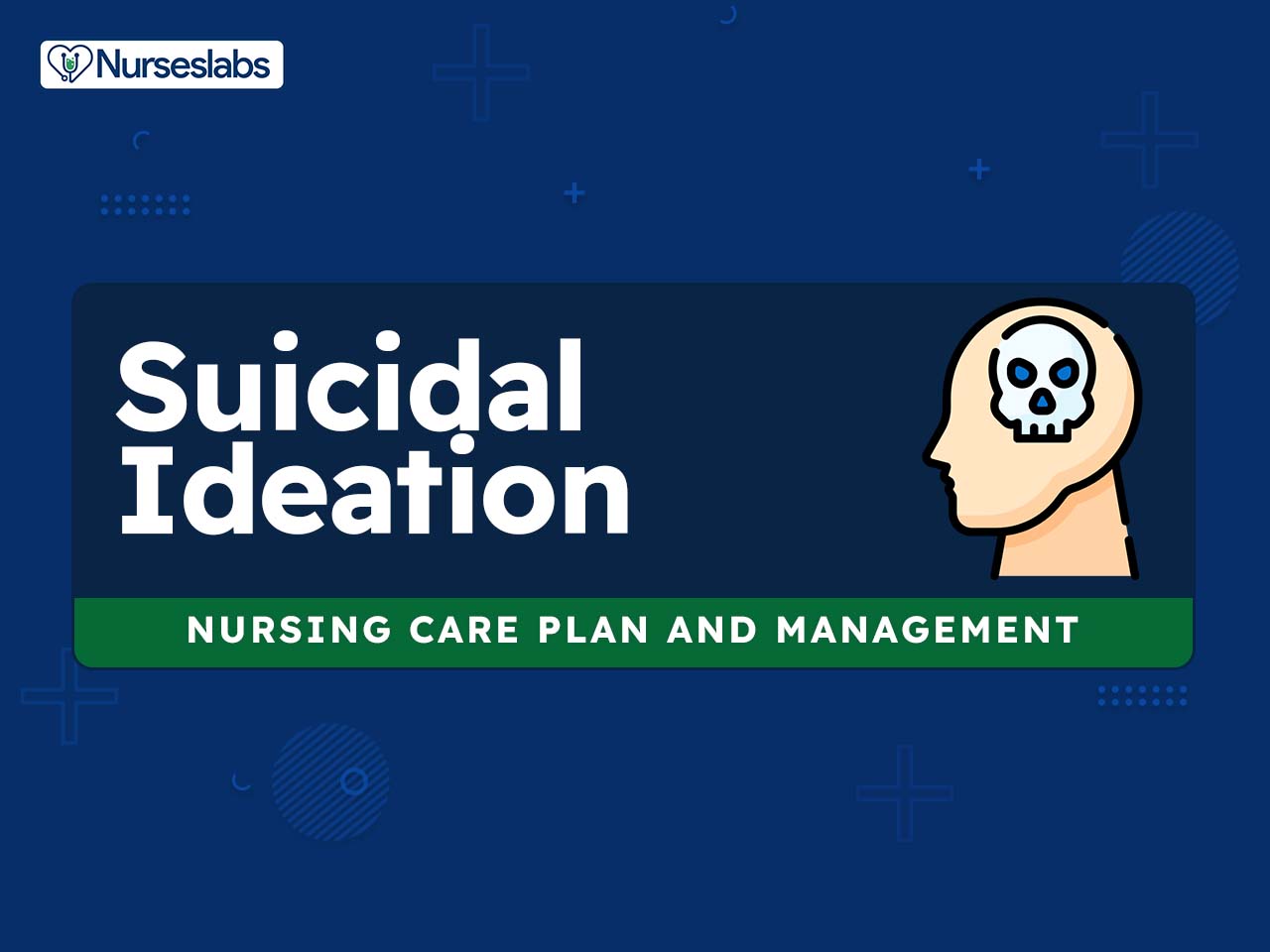
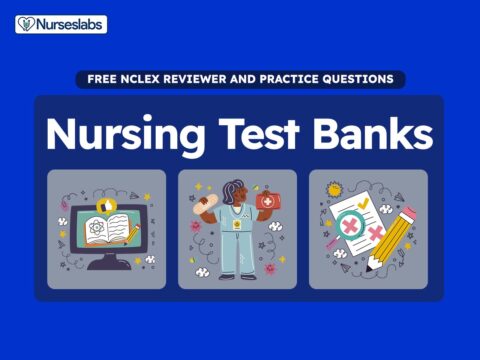
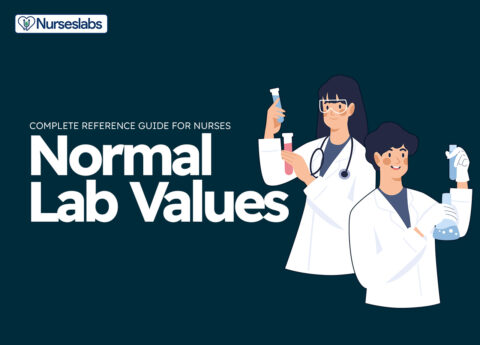






















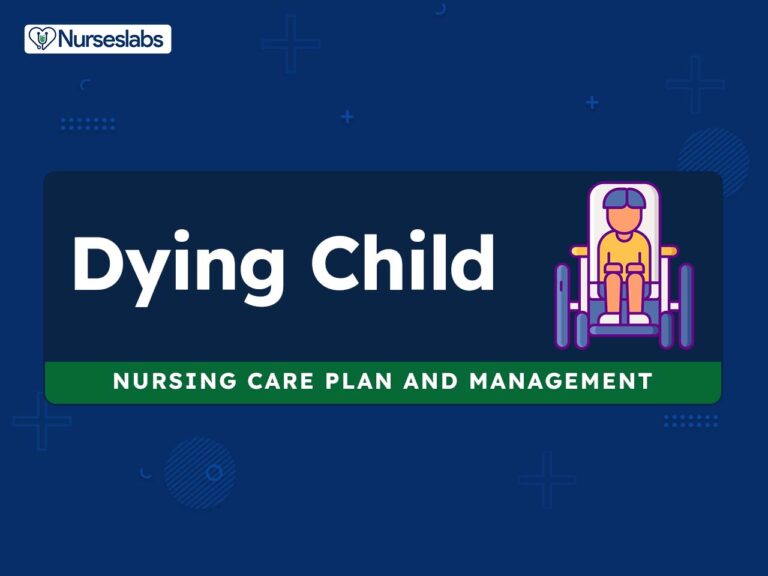
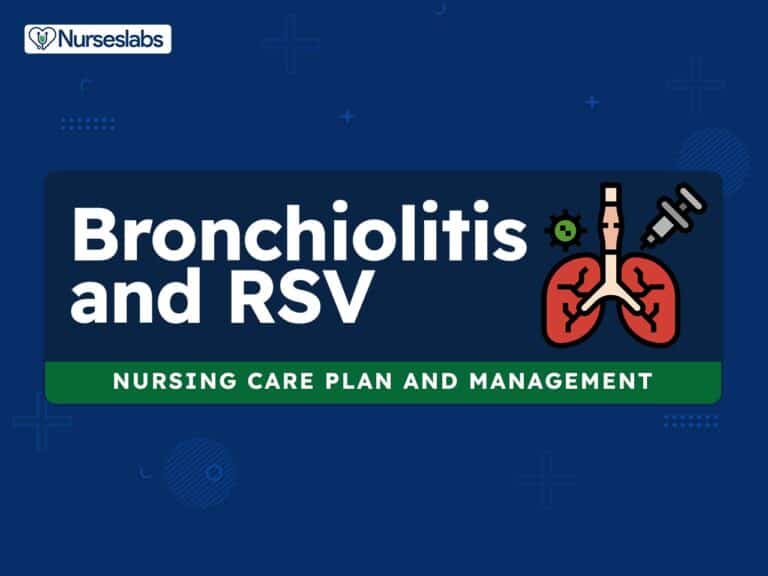

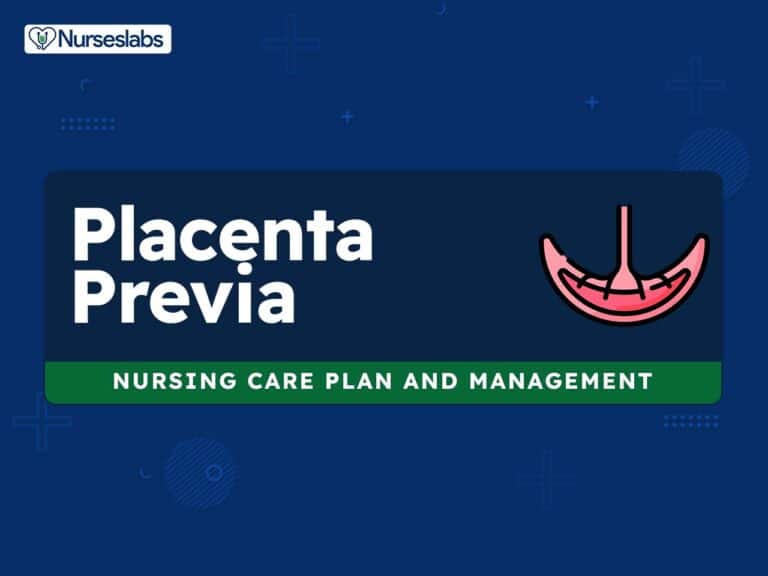

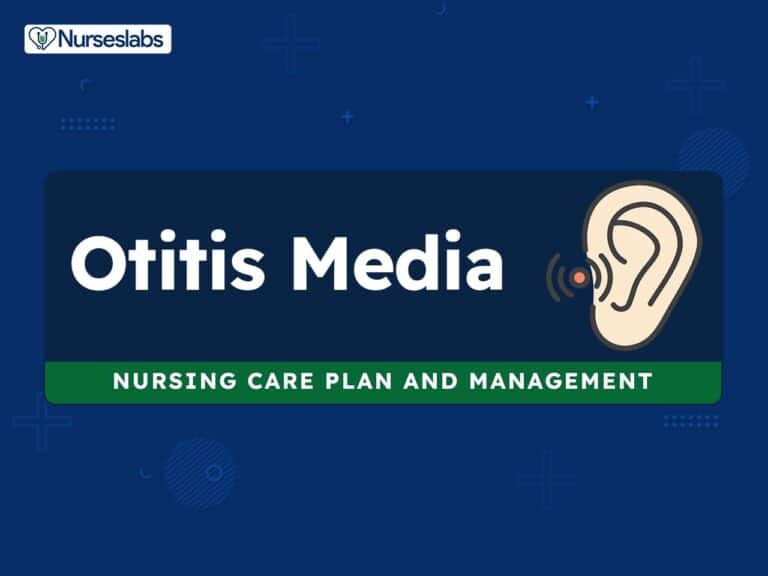

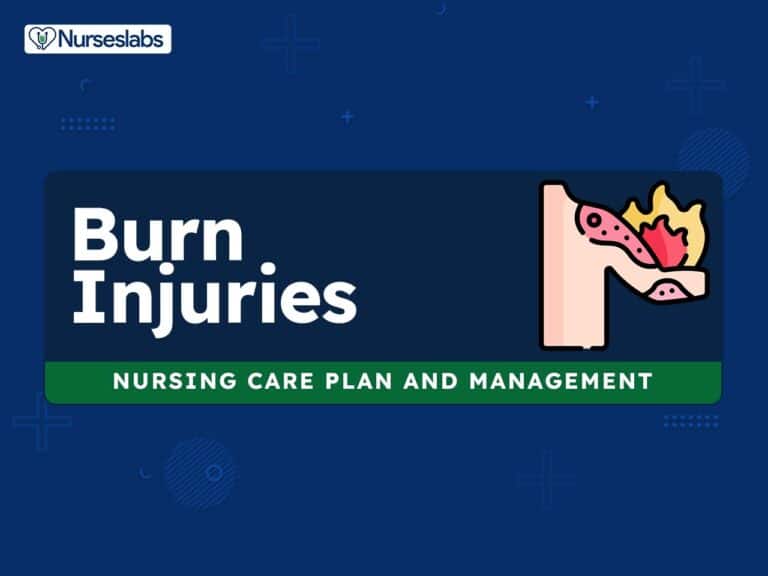

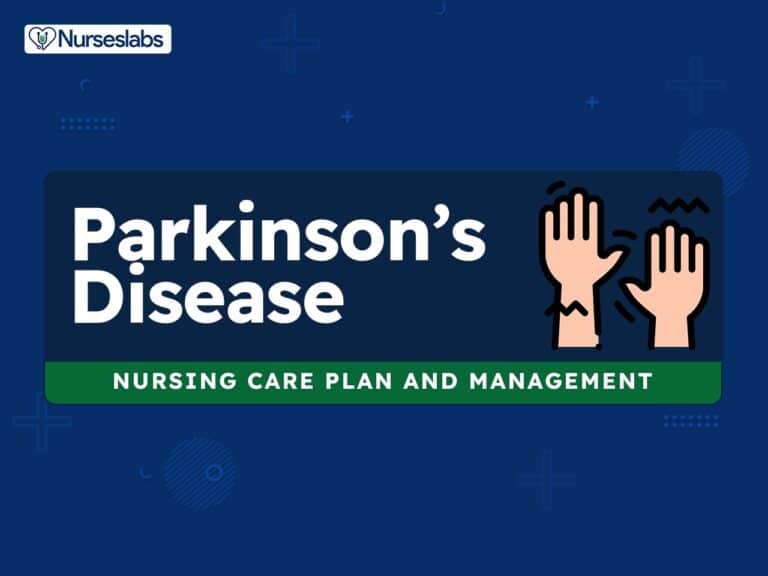
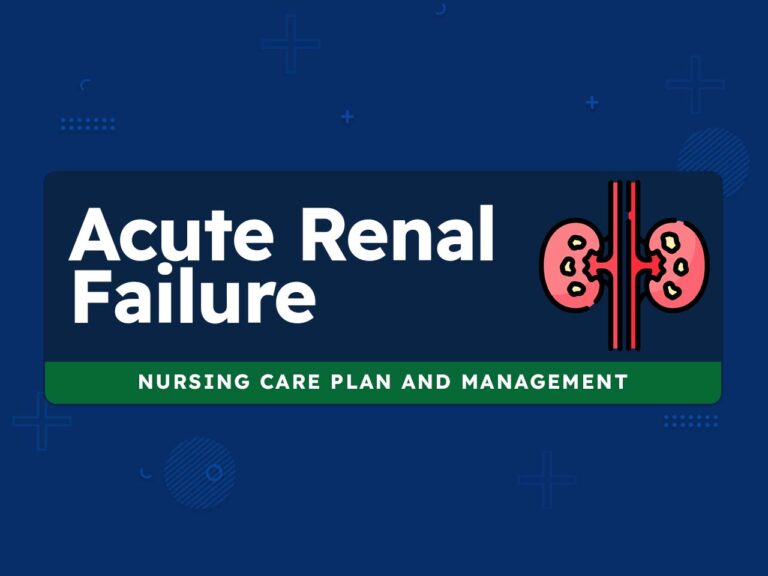

Leave a Comment